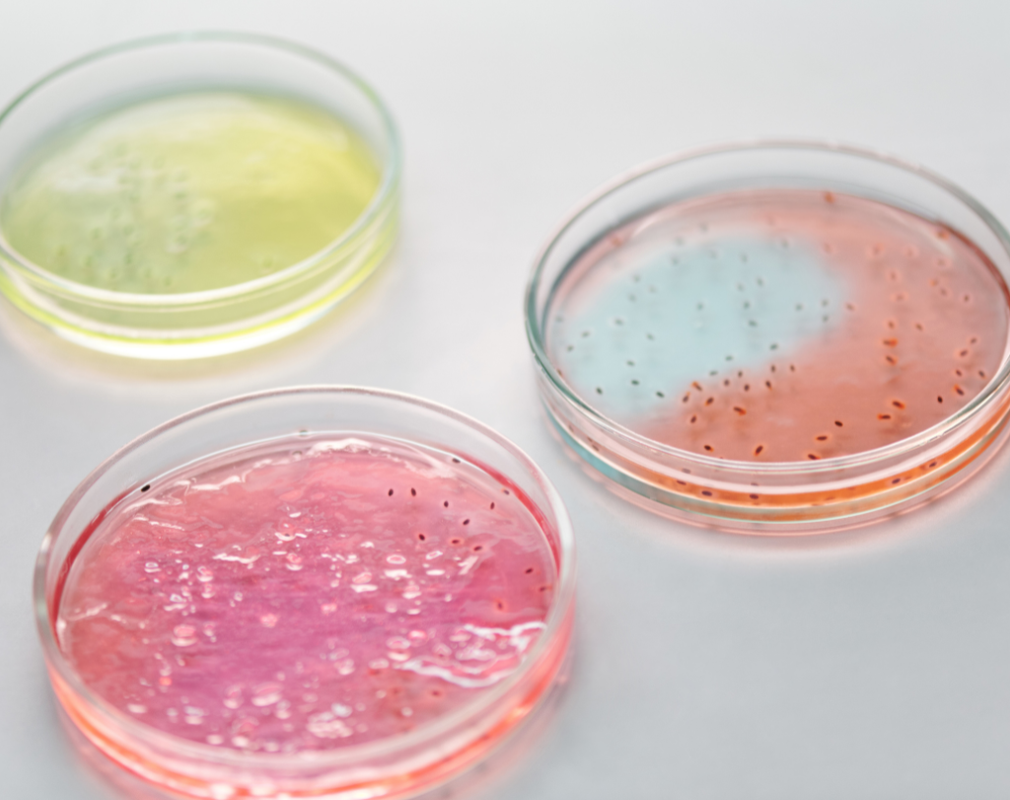
Top 3 Reasons to Incorporate Shepherd's Purse into Your Herbal Medicine Cabinet
What is Shepherd’s Purse?
Shepherd’s Purse is a magical herb that exudes masculine energy and coincides with the zodiac sign Capricorn as well as the planet Saturn.
Its botanical identification is capsella bursa-pastoris and it is classified as a weed with tri shaped fruit that resembles a purse.
Additionally, during its inception, shepherd’s purse was deemed to have healing properties considering that it protected individuals from wounds.
With aliases such as poverty weed, poor man’s pharmacy, and beggar tick, it is fathomable as to why some individuals are apprehensive about employing this herb for medicinal purposes.
In the succeeding sections, this article will cover the uses, benefits, and side effects of shepherd’s purse.
How to use Shepherd’s Purse
Regarded primarily as a diuretic in ancient times, shepherd’s purse was also utilized as a protectant against infections, and excessive bleeding.
Ultimately, acquiring more information about this miraculous plant during the 20th century has enabled holistic practitioners to exploit shepherd’s purse for the following conditions;
Diarrhea
Diarrhea or dysentery is attributed to frequent bowel movements that are watery in nature and lack structure.
Some of the warning signs that an amoeba has contaminated your food or water supply, therefore prompting diarrhea, include abdominal cramping, loss of appetite, and an elevated temperature.
Furthermore, two of the best methods to treat diarrhea encompass taking shepherd’s purse as an infusion or by squeezing the juice from the leaves.
Specifically, steep 1 tsp of tea to 8 ounces of water and drink the tea 2 to 3 times a day until the symptoms subside when incorporating the infusion method.
If you prefer the latter, it is recommended to take 40-50 drops of juice a day, and store it in the refrigerator to preserve freshness.
Boils
Purple agonizing bumps that grow underneath the skin’s surface and ooze yellowish to greenish pus are called boils.
Boils have a tendency to emerge when the accumulation of ingrown hairs has been infected by Staphylococcus aureus bacteria, which inhabits the skin and interior of the nose.
Shepherd’s purse anti-bacterial activity is one of the properties that makes it a suitable treatment for boils on the skin, buttocks, inner thighs, and any place one may appear.
Essentially, to promote drainage, shepherd’s purse should be used topically as a salve and applied for 10 to 15 minutes, up to 3 times a day for a favorable outcome.
On the other hand, if you attempted this herbal remedy and your boil is not improving, contact your healthcare physician as soon as possible to prevent any further complications.

Menstrual Disorders
Menstrual disorders are defined as abnormalities in a woman’s cycle that interfere with her emotional, physical, and cognitive welfare.
19% of women experience relentless symptoms during their menses which can range from flooding (blood loss that exceeds the normal amount), to excruciating cramping.
For instance, some of the menstrual disorders that can negatively impact a woman’s quality of life are endometriosis, fibroids, polyps, and PMS.
To apply shepherd’s purse as a remedy for the menstrual cycle, this herb should be sipped as a tea during the luteal phase.
In addition, it is imperative to note that shepherd’s purse can be combined with lady’s mantle, and yarrow to greatly reduce PMS and heavy menses.
STI’S
When the reproductive system is hijacked by parasites, viruses, or bacteria, the gut flora is unable to maintain harmony within the body, and thus illness ensues.
With that being said, STI’s are infections that induce sores, warts, itching, burning, discharge, and even cancer through sexual contact with another being.
According to the CDC, half of the American population will experience an STI before exiting this realm, and there is a 30% chance that he/she will contract chlamydia, gonorrhea, or syphilis.
Moreover, even though shepherd’s purse has not been extensively tested for the treatment of STD’s, it has shown potential in terms of countering bacteria.
Notably, studies indicated that shepherd’s purse was capable of fighting B. anthracis (gram positive bacteria), also known as anthrax, which is a fatal disease for animals and sometimes humans.
Nevertheless, more research is needed prior to determining the effectiveness of shepherd’s purse for sexually transmitted infections.
What are the benefits of Shepherd’s Purse?
1.Anti-Inflammatory
A biological reaction to stimuli such as pathogens, dust, injury, or damaged cells is regarded as inflammation.
Inflammation can lead to chronic diseases that affect a person’s ability to function and if left untreated, DNA can become permanently altered.
Shepherd’s purse is a feasible solution for assisting the body with moderate inflammation based on some studies.
To illustrate, when nitric oxide, prostaglandin E2, tumor necrosis factor-a, and interleukin-6 (associated with diabetes, RA, and cancer) was examined, shepherd’s purse was able to decrease its production.
However, taking into account that the test was conducted on mice, further experimentation is needed to establish the efficacy of this herbal treatment.

2.Anti-Microbial
Microbes are teeny living organisms that populate the entirety of the human body and globe.
Residing in water, soil as well as the atmosphere, microbes are classified into five species known as Viruses, Fungus, Bacteria, Archaea, and Protists.
When too many destructive microbes overwhelm the delicate balance of the human body, it becomes difficult for your internal army to ward off illness.
Further, one of the reasons shepherd’s purse has been declared a natural remedy for bacterial infections is based on its anti-microbial activity.
In particular, when a solution containing shepherd’s purse was applied to enterococci (lactic acid bacteria) in vitro, the bacterium was hindered.
To treat microbial infections, shepherd’s purse should be used as a tincture and taken orally as directed.
3.Anti-Oxidant
Antioxidants are essential to the maintenance and performance of the human body given that it attacks free radicals.
When free radicals have the freedom to behave outrageously and react with your cells for prolonged periods of time, disease and inflammation arise.
This is why it is imperative to consume various herbs that possess characteristics that support the body in protecting your cells from oxidative stress.
Additionally, shepherd’s purse was capable of impeding the insurgence of oxidative stress in vivo, as reported by an article entitled “Oxidative medicine and cellular longevity”.
Despite the fact that scientists’ are still trying to uncover the significance of free radicals and human health, they know it is a determining factor in illness.
Side Effects
The medicinal properties of shepherd’s purse are ideal if you don’t have an adverse reaction after implementation.
Nonetheless, if the plant’s composition doesn’t align with your body or you experience an allergic reaction, there are some warning signs to look out for:
· Fatigue
· Dilated Pupils
· Spotting
· Respiratory Distress
Takeaway
It is evident that shepherd’s purse can steer your body in a positive direction, in comparison to traditional drugs that destroy your internal ecosystem.
Its antagonistic attitude towards inflammation, microbes, and oxidants can elevate your health status when you put this herb into practice.
Even though shepherd’s purse may not be the best option for everyone, don’t hesitate to give this miraculous plant a try.
All things considered, if humankind has trusted this herb to heal and protect their bodies for centuries, maybe it does possess a little bit of magic.
References
Legacy, H. (n.d.). History of Shepherd’s Purse. https://www.herballegacy.com/Ray_History.html
Peng, J., Hu, T., Li, J., Du, J., Zhu, K., Cheng, B., & Li, K. (2019). Shepherd’s purse polyphenols exert its anti-inflammatory and antioxidative effects associated with suppressing MAPK and NF-κB pathways and heme oxygenase-1 activation. Oxidative medicine and cellular longevity, 2019.
Ritual, R. O. (n.d.). Ritual Herbs - Shepherd’s Purse. Rite of Ritual. https://riteofritual.com/products/ritual-herbs-shepherds-purse
Tadjiboyeva, M., Axmedjanova, L., Imomaliyev, S., Xatamova, S., & Saitkulov, F. (2023). ANALYSIS OF THE MEDICINAL PROPERTIES AND COMPOSITION OF THE SHEPHERD'S PURSE PLANT. Академические исследования в современной науке, 2(12), 181-186.